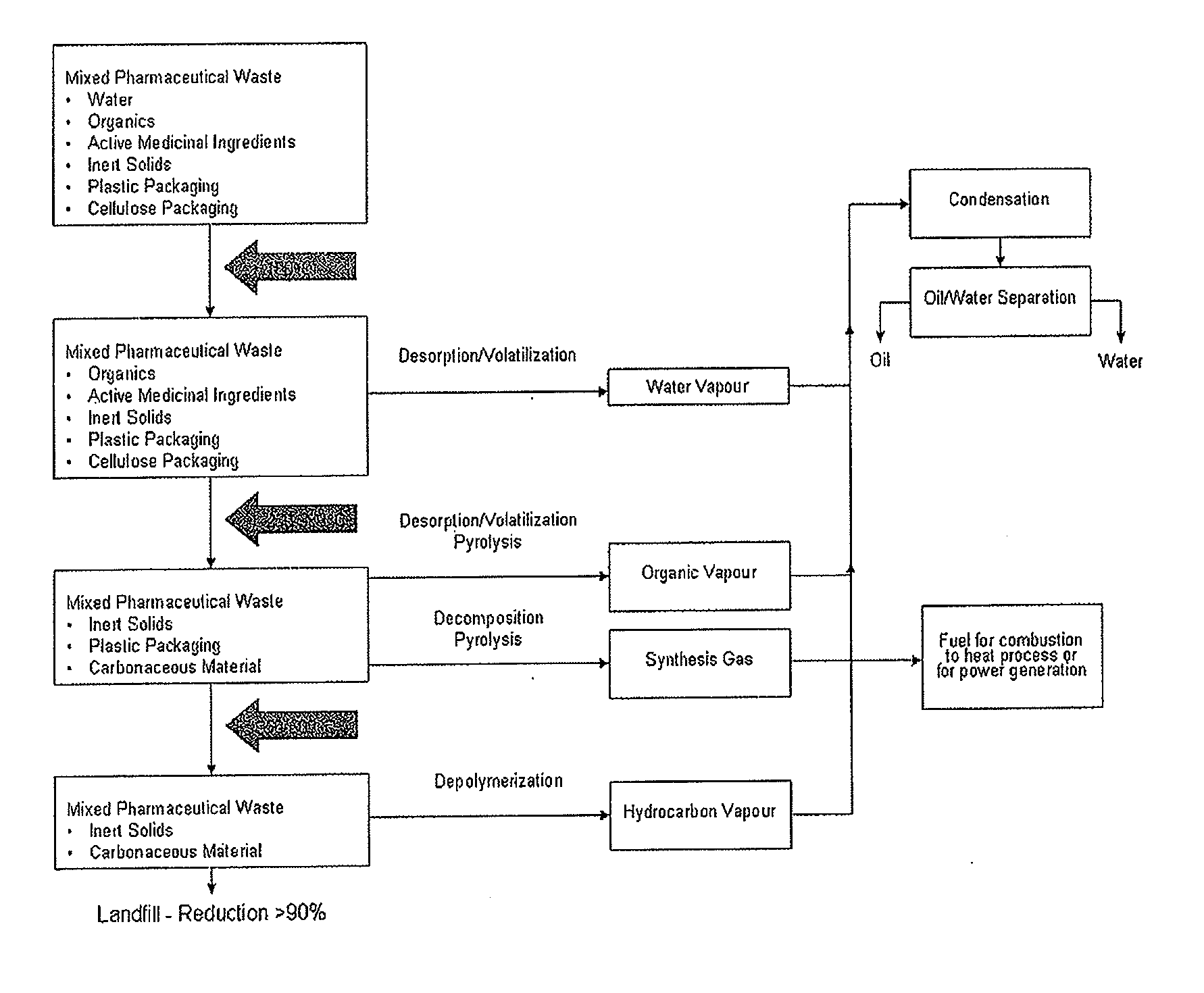Process for the Thermal Treatment of Pharmaceutical Waste Material
a waste material and thermal treatment technology, applied in the field of waste material thermal treatment, can solve the problems of not all components of the waste stream present sufficient economic value, not all parts of the waste stream are suitable for compost production, and the volume of the treated waste material recovered after the process may be about 90% reduced
- Summary
- Abstract
- Description
- Claims
- Application Information
AI Technical Summary
Benefits of technology
Problems solved by technology
Method used
Image
Examples
Embodiment Construction
[0021]As used herein and in the claims, the following terms have the meaning and definition set out below.
[0022]The term “pyrolysis” is meant to encompass processes wherein the atmosphere in the pyrolysis chamber may contain a small amount of air (oxygen), but the amount is so small that there is no visible combustion. Although the term “pyrolysis” is generally defined as the “transformation of a compound into one or more substances by heat alone, i.e., without oxidation” (Hawley's Condensed Chemical Dictionary, 13th Ed. (1997).), it is envisaged that at least a small amount of oxygen may be present into the chamber during the process according to the invention. Indeed, some air may enter the chamber during the loading of the waste. Also some air may be entrained within the waste. Moreover, as the pressure within the chamber may be slightly negative, a small amount of air may be drawn into the furnace through deficient seals for example.
[0023]The term “waste material” is meant to re...
PUM
| Property | Measurement | Unit |
|---|---|---|
| temperature | aaaaa | aaaaa |
| temperature | aaaaa | aaaaa |
| temperature | aaaaa | aaaaa |
Abstract
Description
Claims
Application Information
 Login to View More
Login to View More - R&D
- Intellectual Property
- Life Sciences
- Materials
- Tech Scout
- Unparalleled Data Quality
- Higher Quality Content
- 60% Fewer Hallucinations
Browse by: Latest US Patents, China's latest patents, Technical Efficacy Thesaurus, Application Domain, Technology Topic, Popular Technical Reports.
© 2025 PatSnap. All rights reserved.Legal|Privacy policy|Modern Slavery Act Transparency Statement|Sitemap|About US| Contact US: help@patsnap.com


